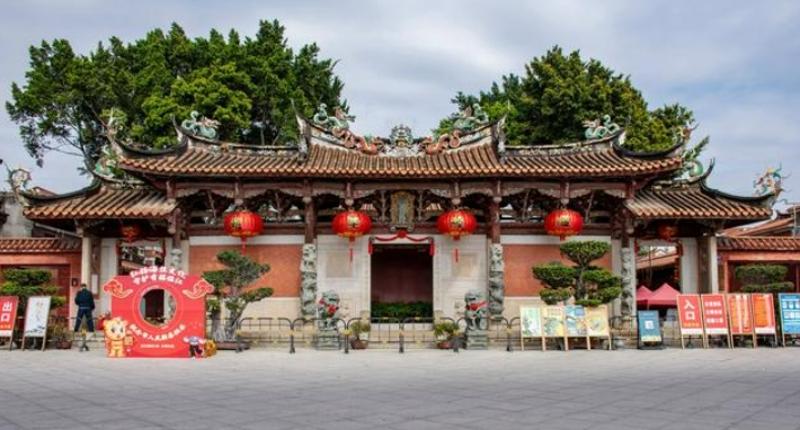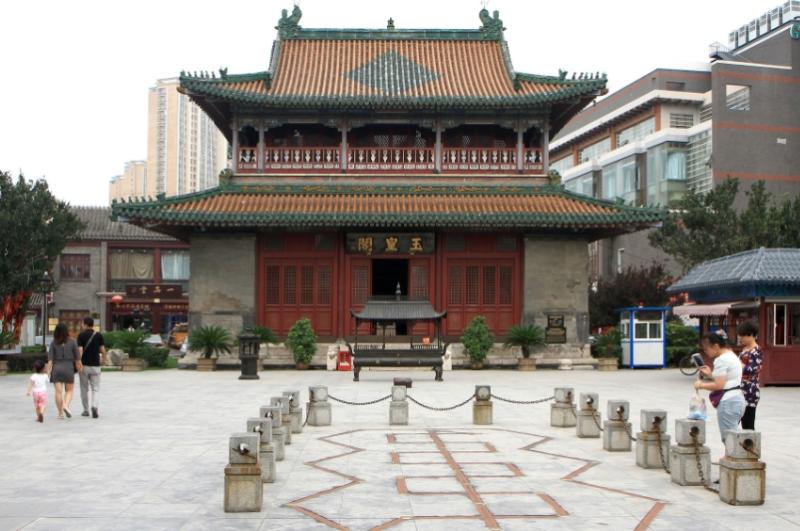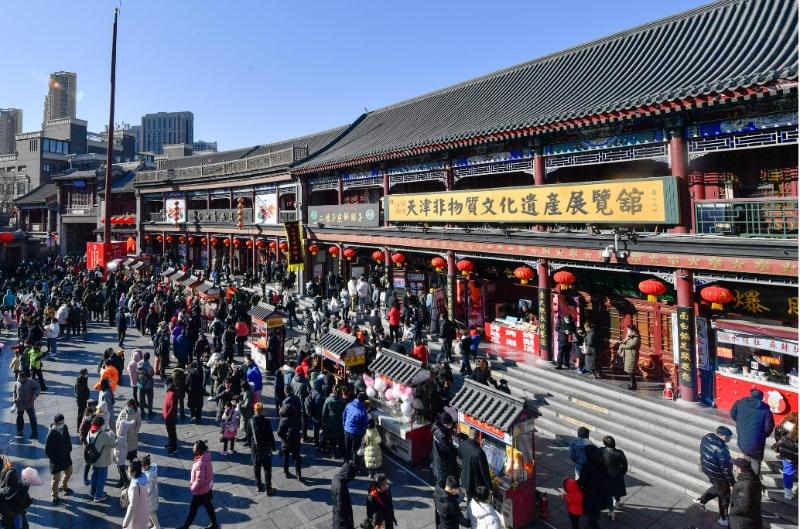Famous Attractions in Tianjin Ancient Culture Street
Tianjin Ancient Culture Street is home to many historically charming attractions, including the Tianhou Palace, Yuhuang Pavilion, Tongqingli, Tianyan Square, Tianjin Folk Museum, and Tianjin Huaxia Shoe Culture Museum. Each of these attractions has a rich historical background and cultural connotation, making them essential for understanding the city of Tianjin.
Tianhou Palace
Tianhou Palace is the oldest building on Tianjin Ancient Culture Street, built in 1320, and one of the oldest structures in Tianjin. The palace enshrines the "Heavenly Empress" Lin Mo, also known as Mazu, a deity worshipped by sailors, travelers, merchants, and fishermen.

Reference:Overview of Tianjin Ancient Culture Street
Historical Background of Tianhou Palace
Tianhou Palace, built in 1320, boasts over 700 years of history and is one of the oldest buildings in Tianjin, holding significant historical value.
Cultural Exhibits at Tianhou Palace
The Tianjin Folk Museum, located in the two-story building south of Tianhou Palace, showcases early Tianjin's daily necessities, handicrafts, brick-carved doorways, and various trades, recreating the scenes of old Tianjin's street life.
Festivals and Activities at Tianhou Palace
Every year on the 23rd day of the third lunar month, the birthday of the Heavenly Empress is celebrated with a bustling temple fair on Ancient Culture Street, attracting numerous visitors to participate and celebrate.
Yuhuang Pavilion
Yuhuang Pavilion is a historically significant Taoist building on Tianjin Ancient Culture Street, constructed during the Hongwu period of the Ming Dynasty, with over 600 years of history. It primarily worships the Jade Emperor, one of the highest-ranking deities in Taoism.

Architectural Complex of Yuhuang Pavilion
The original architectural complex of Yuhuang Pavilion was extensive, including flagpoles, archways, mountain gates, bell and drum towers, front halls, Bagua Pavilion, Qingxu Pavilion, Southern and Northern Dipper Towers, and the Sanqing Hall.
Existing Buildings of Yuhuang Pavilion
In modern times, the complex suffered significant damage due to imperialist invasions, and now only the Qingxu Pavilion remains. The pavilion is two stories high with a nine-ridge roof covered with yellow glazed tiles, and the ridge, beasts, and eaves are made of green glazed tiles.
Tongqingli
Tongqingli, located at the northern end of Tianjin Ancient Culture Street, was built in 1913 and was originally a bank operated by the Bian family, later converted into residential houses. The area consists of ten independent courtyards, each with a distinctive cross-street building at the entrance.

Architectural Style of Tongqingli
The cross-street buildings in Tongqingli feature butterfly-shaped hollow wooden carvings on the upper part of the entrance, symbolizing "prosperity and celebration," showcasing traditional Tianjin architecture.
Cultural Experience in Tongqingli
Tongqingli has teahouses, the Clay Figurine Zhang Exhibition Hall, and the Folk Experience Hall, making it an excellent place to learn about Tianjin's history and culture.
Tianyan Square
Tianyan Square is located in Tianjin Ancient Culture Street, built on the former residence of Yan Fu. The square is renowned because Yan Fu translated the famous "Tianyan Lun" (Evolution and Ethics) at this residence.
Memorial Facilities at Tianyan Square
The square features a bronze statue of Yan Fu and a stone carving of "Tianyan Lun" to commemorate his outstanding contributions to the revitalization of national thought.
Cultural Displays at Tianyan Square
The shops and eaves around the square feature colorful paintings depicting legendary stories from the Han to Qing dynasties and content from the Four Great Classical Novels, rich in historical and cultural connotations. Additionally, Tianyan Square is also home to the Clay Figurine Zhang Family Shop.
Tianjin Folk Museum
The Tianjin Folk Museum is located in the two-story building south of Tianhou Palace, and it is the most down-to-earth museum in Tianjin, showcasing early Tianjin's daily necessities, handicrafts, brick-carved doorways, and various trades, recreating the scenes of old Tianjin's street life.

Exhibits at Tianjin Folk Museum
The museum displays wedding customs exhibitions, Ming Dynasty Tianjin city bricks, and Qing Dynasty canal transport models, witnessing the saying "First there was Tianhou Palace, then there was Tianjin city."
Cultural Experience at Tianjin Folk Museum
The museum also features clay figurine artworks and old New Year life scenes, showcasing the rich folk culture of Tianjin, making it a must-see.
Tianjin Huaxia Shoe Culture Museum
The Tianjin Huaxia Shoe Culture Museum is China's first shoe museum, located at the southern end of Ancient Culture Street. It was established by the Laomeihua Shoe Store and covers an area of over 800 square meters.
Exhibits at Tianjin Huaxia Shoe Culture Museum
The museum showcases six sections, including the history of shoes, shoe folk customs, and exquisite shoes, reflecting the evolution and development of Chinese shoe culture.
Nearby Cultural Attractions
To the right of the museum is the Laomeihua Tianjin Style Cheongsam Art Museum, and to the left is the Lianshengzhai Embroidery Museum, both significant cultural attractions on Ancient Culture Street.
Questions and Answers
Q1: What makes Tianhou Palace a significant attraction on Tianjin Ancient Culture Street?
A1: Tianhou Palace, built in 1320, is the oldest building on Tianjin Ancient Culture Street. It enshrines the "Heavenly Empress" Lin Mo, a deity worshipped by sailors, travelers, merchants, and fishermen. Its historical value and cultural exhibits, such as the Tianjin Folk Museum, make it a significant attraction.
Q2: What can visitors learn at the Tianjin Huaxia Shoe Culture Museum?
A2: Visitors at the Tianjin Huaxia Shoe Culture Museum can learn about the history of shoes, shoe folk customs, and see exquisite shoe designs. The museum reflects the evolution and development of Chinese shoe culture through its diverse exhibits.